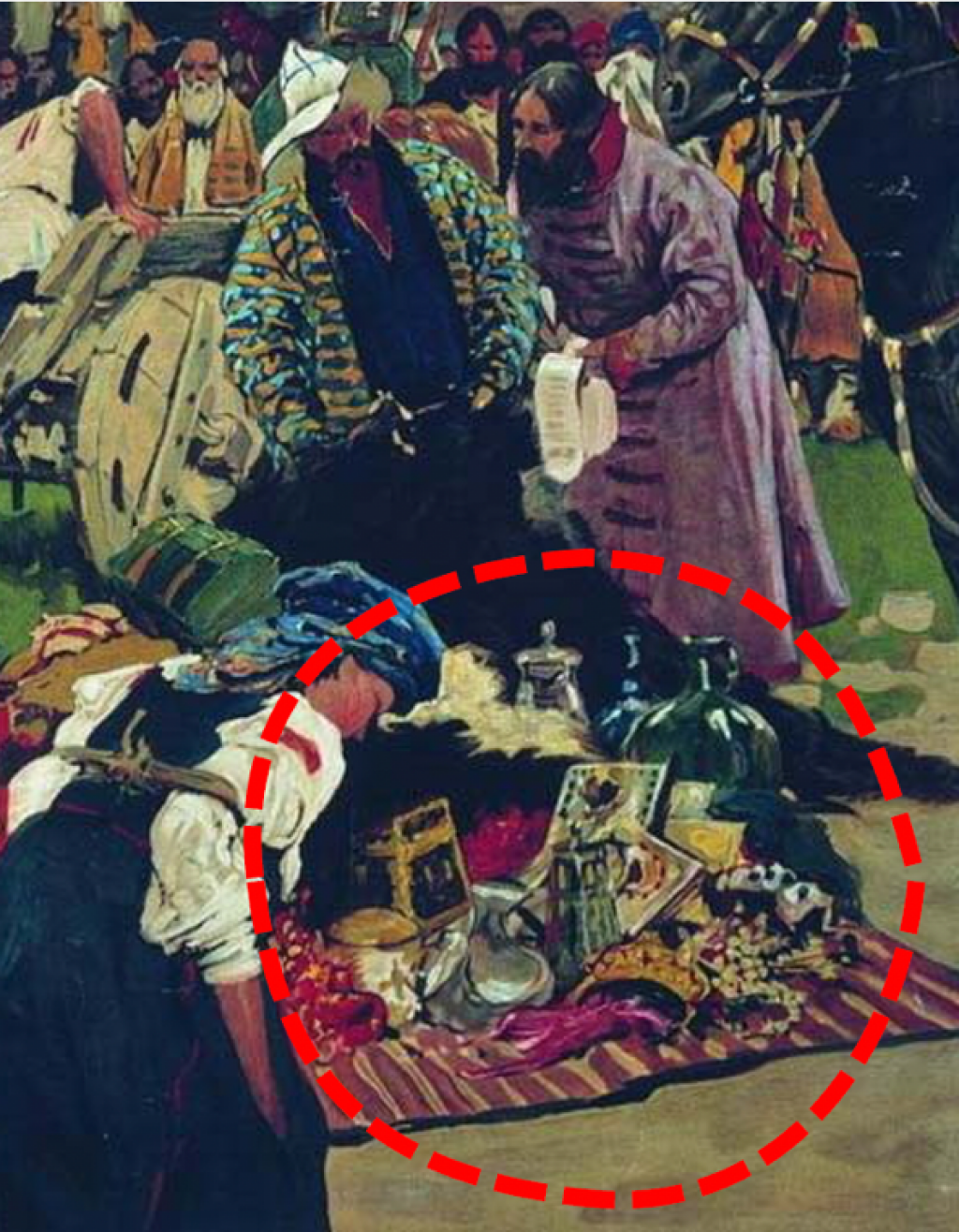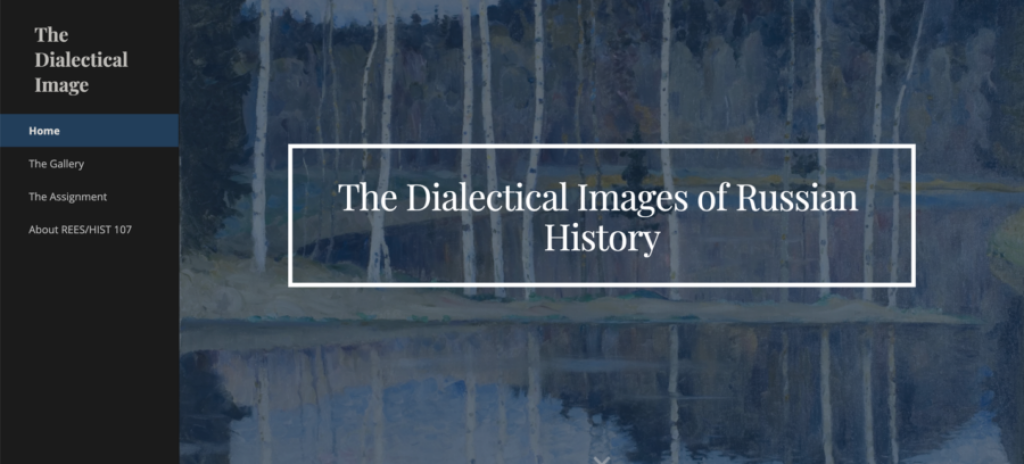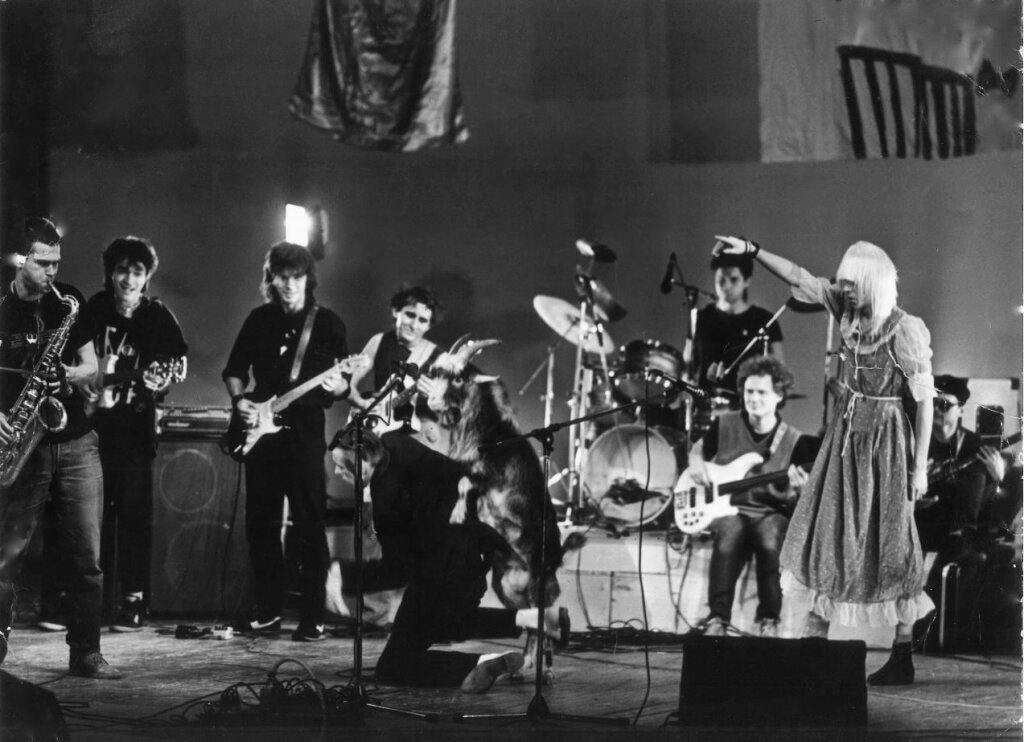In Fall 2020, our friend and colleague Stephen Cohen passed away. At the time, we honored him with a post containing testimonials from past and current recipients of the Stephen Cohen Fellowship, which funds graduate education for master’s students in the Department of Russian & Slavic Studies at NYU, and the Cohen-Tucker Fellowship, which supports dissertation research in the field of Russian Studies. This semester, we are publishing a series focusing on Cohen and Cohen-Tucker Fellows' experiences and research in the REEES field. This is the fourth. Past installments in the series may be found here.
Nicholas Bujalski is a Mellon Postdoctoral Fellow in the Department of History and Visiting Assistant Professor in the Department of Russian and East European Studies at Oberlin College.
“List my goods too!” asked Voshchev as he unpacked his bag.
In the village he had gathered every beggarly and rejected object, unconsciousness of every kind and all the trivia of unknownness…
— Andrei Platonov, The Foundation Pit (1929)
When university students are first introduced to the discipline of history, it is often as a practice of grand narratives – the surveying and engineering of broad explanatory models about the past. But what space do we give in the classroom to more minute critical labors – siftings through the debris of the Russian, East European, and Eurasian centuries; the historian as collector, or humble ragpicker?
In the autumn of 2020, I taught an introductory survey of Russian History at Oberlin College. Here – in an attempt to highlight alternate approaches to the profession; in an attempt to invite engagement in days of pandemic and precarity – I led a running project titled The Dialectical Image.
When asked to contribute to All The Russias’ Festschrift for Stephen F. Cohen, I thought that a description of this experimental program might be of interest: as an unorthodox approach to historical narratives and historical objects; as an example of pandemic pedagogy; and as a testament to the ways in which Dr. Cohen’s legacy continues to make itself felt not only in monographs and journals, but also in the classroom.
***
Here’s how the project worked. In addition to our normal lectures and readings, every week I would craft a new episode for the students in our dialectical image series (a short piece of creative non-fiction, a ten-minute film, a podcast conversation with a specialist in the field, etc.). No matter the format, the purpose of each of these miniature packages was to interrogate a thing: an object, a space, an image that spoke to the topics of the week. In this fashion, we slowly collected a strange set of materials from the Eurasian past.
But let’s take a step back. What was the purpose of these accumulated objects, and how were they coaxed to speak? The term "dialectical image" derives from the critical theory of Walter Benjamin. Specifically, Convolute N of his Arcades Project (1927-40) features the enigmatic claim that “History decays into images, not into stories.” This is, certainly, a fitting characterization of Benjamin’s own idiosyncratic intellectual project: his unfinished attempt to sift the sense of a century from its discarded objects and phantasmagoric forms. It is also, I believe, a fascinating starting point for rethinking elements of Russian history pedagogy.
For so often, especially in large survey courses, students encounter the past as something already woven into narratives. The stories told by lectures, by textbooks, by primary sources… A good class will foster critical engagement with these ready-made pieces, training students to judge their worth, biases, possibilities, limitations. This is surely important work – but the raw material from which they are constructed is stored at a remove.
Thus, to enter into a historical moment through its scattered things – to see image as prior to narrative; to "crack open" objects in search of the contradictions held within – invites students to exercise entirely different critical muscles. And as the course adapted itself to this peculiar approach, each new object attracted rich classroom discussions.
***
A rough cloth spread with a small Rus’ community’s iasak payment – what diverse social and economic structures of the appanage period lay congealed within these handicrafts and furs? Do these materials support political narratives of an exploitative Mongol "yoke", a multi-cultural "empire of exchange", or both?
Thirty-two teeth, lovingly preserved in a small wooden box in St. Petersburg’s kunstkamera – does their ivory chatter with the aberrant excesses of Peter I’s modernization project, or was this a period when "the grotesque" always shadowed "the great"? Does this emperor’s amateur dentistry reveal an eccentric Russian orbit around early-modern European science, or does it perhaps speak more faithfully to the violence of the extractive Baconian project than this moment’s continental proponents could ever voice themselves?
A bag of frogs, carefully collected by the quixotic young E.V. Bazarov – What insight does this swampy parcel give us into the physiological passions of the radical 1860s? How did materialism arise as a worldview, a practice, an affectation, a fashion; and can we dissect here the ultimate limits of the nihilist project?
Thus did each dialectical image give a new perspective on the course material, often becoming the epicenter of the week’s discussions. As objects preceding narrativization, each is fundamentally ‘open’ – each can be made to speak to a plurality of mutually-exclusive explanatory models. I found that these peculiar materials became a doorway through which considerations of historical ambiguity and historical contradiction entered the classroom – as well as student practice in venturing ‘suspended hypotheses’ about the past.
The lessons (and enjoyment!) received from this project really became clear to me in the course’s final project. Here, students were carefully guided in small groups to select, research, and crack apart their own dialectical images from the Russian past, contributing their own insights and interests to the running series. When these were all gathered together and shared in an online gallery day, the results were truly impressive: Fabergé eggs peeled open to expose stories of trans-European royal culture alongside devastating material inequalities; St. Volodymyr’s Cathedral in Kyiv revealed as a concretization of a thousand-year hybrid Eurasian past (and a particular late-nineteenth-century moment’s invention of this past); the new lines of the eighteenth-century grazhdanskii shrift speaking to (and acting as medium for) so many of the contradictions of Russian modernization.
The students pulled apart their own dialectical images and reviewed those of their peers with real enthusiasm. Over the course of the semester, they had been invited to act not just as passive witnesses to established narratives, but active curators of their own rich kunstkamera from the strange debris of past centuries; astronomers descrying their own historical constellations.
***
In describing this work, my aim has not only been to present a certain pedagogical project with which I found great success in our times of distraction and uncertainty. I am also in the process of adapting this series for my upcoming Soviet history survey, where I think a focus on dialectical images can be used to even greater effect.
On the one hand, the plane of intellectual history reveals many affinities between the dialectical image and the Russian twentieth century. The work of Walter Benjamin that inspired this approach itself arose out of the cultural-political energies of the 1920s and 1930s; and comparable programs appeared at the same time in many different spheres of early-soviet thought (from S.M. Eisenstein’s use of cinematic montage to crack open the immanent shell of the world, to A. Platonov’s dream of the utopian redemption of all lost things in a communist apokatastasis). Indeed, Benjamin’s own journey to Moscow in 1926-1927 found him pulled between the Linnean labors of the Great Soviet Encyclopedia and the dizzying materiality of a new world struggling to be born.
And on the other hand, few periods of historical inquiry are as strangled by grand explanatory models as the soviet twentieth century. Inviting students to smash through normative narrative crusts to unearth a moment’s peculiar images promises to stage a richer classroom encounter with this history, in all its ambiguities and contradictions.
And does this not entail a fundamental affinity with Stephen F. Cohen’s own revisionist project? Throughout his career, he sought to view the soviet past as far more "open" and contingent than the grand political narratives of his time (and our own) would allow. Teaching socialist history through its scattered dialectical images is my own humble attempt at answering this call.





